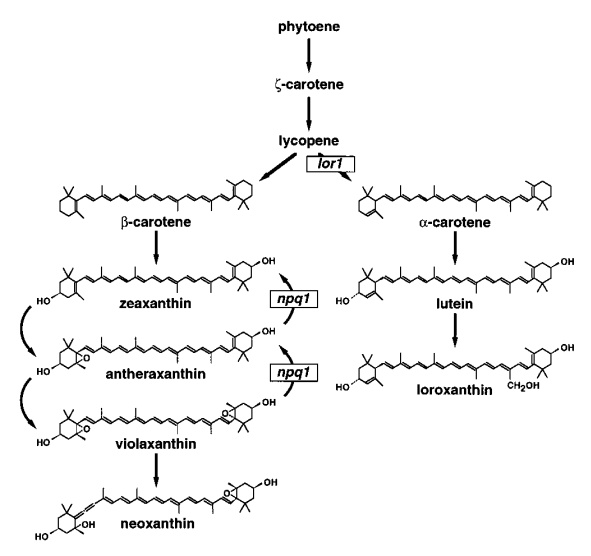Animals are chemotrophs, meaning that they obtain their energy from other organisms, ultimately plants. Animals therefore have no reason to expose themselves excessively to sunlight, which can be damaging when in excess. Animals can protect themselves from the damaging effects of the sun, which include damage to cellular structures through free radical generation, through behavioural modifications. Sitting in the shade is an example of such behaviour. Plants are autotrophs, which means they obtain their energy directly from the energy of the sun, and as a result must position themselves in sunlight in order to produce energy. However, the intensity of the sun varies throughout the day and between the seasons and as such plants must cope with a large variation in sunlight. When sunlight is intense they therefore require mechanisms to prevent cellular damage. Plants are limited in their ability to move and as such must rely on chemical means to protect themselves from the sun.
In order to protect themselves from sunlight, plants produce a wide variety of antioxidants. These include polyphenols, a large diverse group of phytonutrients with ring like structures that include the flavonoids, stilbenes, chalcones and terpenes. Another group of important plant antioxidants are the carotenoids, and their oxidation products, the xanthophylls. Xanthophylls and carotenoids are thought to play a multipurpose role in plants. During times of low light exposure they may increase the light harvesting efficiency of chlorophyll and increase energy production for the plants. This explains the close association between xanthophylls and chlorophyll in plant chloroplasts, where the xanthophylls form part of the light harvesting complexes used in photosynthesis. However, during times of high intensity light when sun exposure is extreme, the carotenoids and xanthophylls may act as antioxidants by quenching singlet oxygen and then dissipate the energy as heat, thus inhibiting chain forming free radical reactions.
Researchers have investigated the effects of xanthophylls and carotenoids in photosynthetic algae. For example, in one study1 researchers used Chlamydomonas reinhardtii, a single celled algae to investigate the effects of mutations in the pathway for xanthophyll synthesis, and related this to protection from ultraviolet light. Mutants that possessed a defect in either but not both of the α-carotene or β-carotene branch of carotenoid synthesis (figure 1) exhibited decreases in free radical quenching when exposed to high light intensity but could still tolerate the light. However double mutants that possessed a defect in both of the α-carotene and β-carotene branch of carotenoid synthesis, which were therefore deficient in lutein and loroxanthin from the α-carotene branch and zeaxanthin and antheraxanthin from the β-carotene branch were extremely sensitive to light of high intensity. This suggests that xanthophylls contribute to the dissipation of excessive light absorbance in photosynthetic algae.

Figure 1. The synthesis of carotenoids and xanthophylls in single celled algae (see Niyogi et al, 1997).
Dr Robert Barrington’s Nutritional Recommendation: Xanthophylls and carotenoids are important antioxidants in plants. When animals, including humans, eat plants they absorb these compounds. Once absorbed carotenoids and xanthophylls enter the tissues of the animals where they perform an antioxidant function. Plant based diets may supply humans with antioxidants that protect them from disease because of their free radical scavenging effects, and in particular diets high in carotenoids may protect from damage by singlet oxygen. Carotenoids are present in a wide variety of plant foods and often impart yellow red or orange colours to vegetables. Green leafy vegetables and algae also contain carotenoids and xanthophylls. Eating a wide variety of vegetables of various colours therefore supplies a wide variety of carotenoids that may be protective of disease, particularly those with aetiologies involving free radical damage.
RdB
